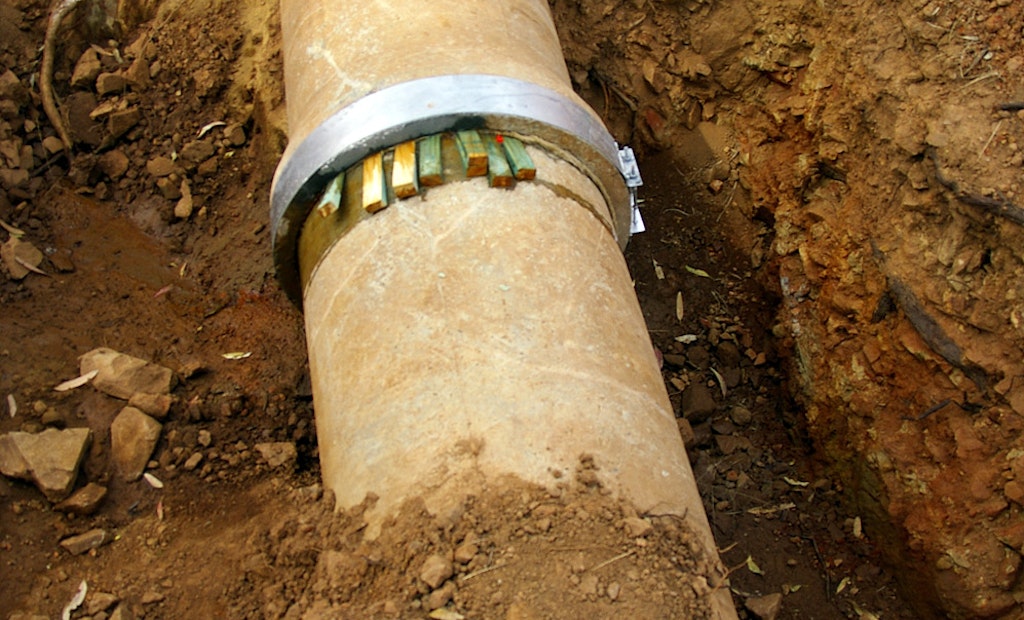
Interested in Location/Detection?
Get Location/Detection articles, news and videos right in your inbox! Sign up now.
Location/Detection + Get AlertsA leaky pipe doesn’t just waste water and energy, according to a study by engineers at the University of Sheffield, of Yorkshire, United Kingdom, released earlier this month. The study is the first to prove conclusively that contaminants can enter pipes through leaks and be transported through the pipe network, Phys.org reports.
According to study results, a significant drop in pressure in a damaged section of pipe can cause untreated and possibly contaminated water surrounding the pipe to be sucked in. Major pressure drops occur when there is a sudden change in velocity: valve or pump failures, and sudden demands on the system.
“Previous studies have shown that material around water pipes contains harmful contaminants, including viruses and bacteria from feces, so anything sucked into the network through a leak is going to include things we don’t want to be drinking,” says lead researcher Professor Joby Boxall.
It was believed that only clean water from the leak would be sucked into a broken pipe, and that even if contaminants were also sucked in, they would be expelled once water pressure in the pipe returned to normal.
“Our research shows that contaminants that enter through a leaking pipe could be reaching consumers’ taps, and although this will be at very low concentrations, it would fail the safety tests if detected,” says co-researcher Dr. Richard Collins.
“We also believe that microorganisms, including pathogens, which enter the network in this way, could attach to the inner surface of the pipe and multiply,” he adds. “If they are later dislodged by another change in flow, they could then reach our taps in higher concentrations.”
The U.K. is taking preventive measures, training their field staff to limit pressure drops and leaks.
Several water companies have now built their own versions of Sheffield University’s experimental facility in order to train their staff and contractors, according to the report.
“The majority of U.K. water companies have or are now commissioning training versions of our experimental facility, so they can help their staff to minimize future risks to water quality as well as reduce structural damage caused to pipes,” Boxall says.
Boxall says water companies are now concentrating on preventing the pressure changes, which could allow contaminants into the water system, for example having firefighters turning water hydrant valves at a slower rate so that the pressure does not suddenly drop.
Source: Phys.org
Photo credit: "Concrete Water Pipe" by Bidgee [CC BY 3.0]





